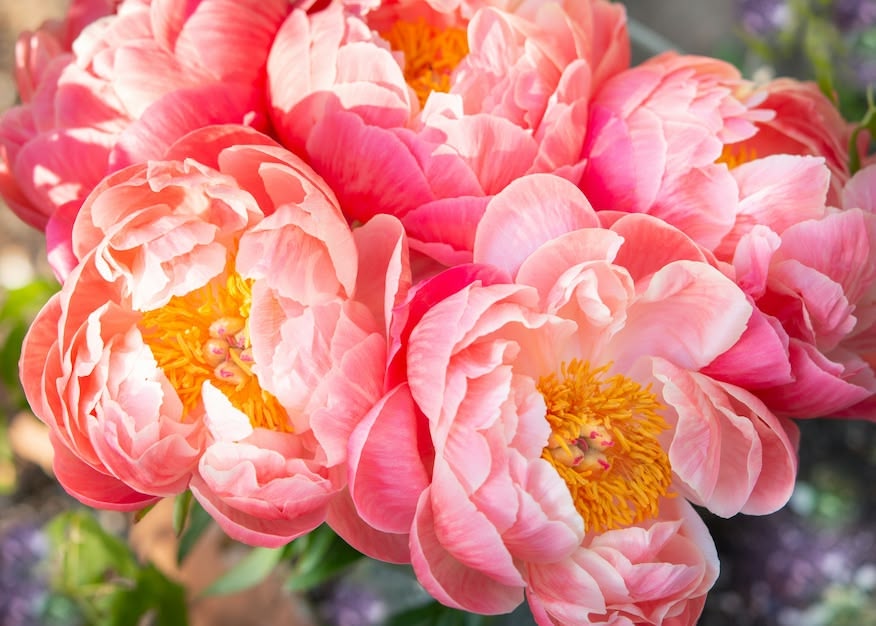In the most recent edition of our newsletter Global Connections, we shared a wonderful article by Megan Holbeck entitled ‘Reframing the whole adventure’. Megan contrasts the common metaphor of ‘life as a journey’ with an alternative, ‘life as a garden’, which she sees as offering a much broader framework when considering life’s possibilities.
Megan kindly credits me with the garden analogy, as she first came across it in a conversation we had during her MBE year during which she explored the many contexts of leadership. In truth the analogy is not new, and certainly not my work alone. One early use of it was made in the 1997 book Roses and Rust: Redefining the essence of leadership in a new age by David Clancy, a dear colleague and collaborator, and his co-author Robert Webber.
However, the gardening analogy is a powerful metaphor for leadership and one that we haven’t yet explored in our blog, so I thought this would be a good time to introduce it.
If you’ve been a regular reader of this blog, you will likely have detected some overarching themes in many of our previous posts. Whether it is authenticity in leadership, vulnerability in leadership, transformational leadership, cultural renewal or many other topics, we often make the point that there is no single way to be a leader, and working with your team – as opposed to them working for you – is foundational in allowing them to be the best that they can be.
A central idea here is that of cultivation, which obviously lends itself to the analogy of a garden.
Cultivating a healthy and successful garden is not ‘set and forget’. The way you tend to your garden will depend on what you want to grow, and even then it is unlikely to end up exactly has you had planned. Some plants will thrive with little or no attention while others will need greater levels of support and care. And it won’t always be obvious which is which at the outset.
Similarly, adding a bag of compost to the soil can lead to better growth, though it can also lead to healthier weeds. It might even be counterproductive in some circumstances.
The weather – always unpredictable in many climates, and always out of our control – will constantly alter your garden’s needs. The best-laid plans can cause challenges when there is too little rain, or too much; if temperatures are too hot, or frosty.
Above all, cultivating your garden will require patience. Just because a plant appears to be struggling doesn’t mean it should be given up on and pulled out. While some plants will flourish almost instantly in the right setting, others can be slow to get started then eventually take off overnight. Any change you make – feeding, watering, pruning, etc. – will likely take some time to bear fruit, so to speak.
All of this is analogous to cultivating a healthy team culture and an effective team.
Building an effective, emotionally healthy team also requires ongoing work from its leaders. As a leader, you need to be meeting your people where they are individually, leading each person in a way that suits who they are and what works best for them.
For instance, in the context of the three centres, one person might be a thinker and doer while needing to be encouraged to better understand the impact of their initiatives on the people around them and how to engage them more effectively (connecting). Another person might be a connector and doer who needs to be guided towards having a plan (thinking).
As with a garden, it’s important to appreciate difference and recognise that there is no ‘one size fits all’ approach to the leadership of people. And development always takes time, as does building a strong culture. Patience and consistency are essential, while also adapting to external change.
I could build on this analogy from any number of angles, however perhaps the best way to think about it is to apply it to your own situation. Next time you’re tending to your own garden, or even just to an indoor plant, think about the things you do to keep your plants healthy. Then think about how similar thinking can be applied to your leadership.
Just as Megan describes in her article, cultivation – of your garden, or your team, of your life’s path – is not a linear process. It requires flexibility and agility, recognition and appreciation of the unexpected and a willingness to, occasionally, stand back and take stock.
Gayle
Photo by Cristina Anne Costello on Unsplash.com

